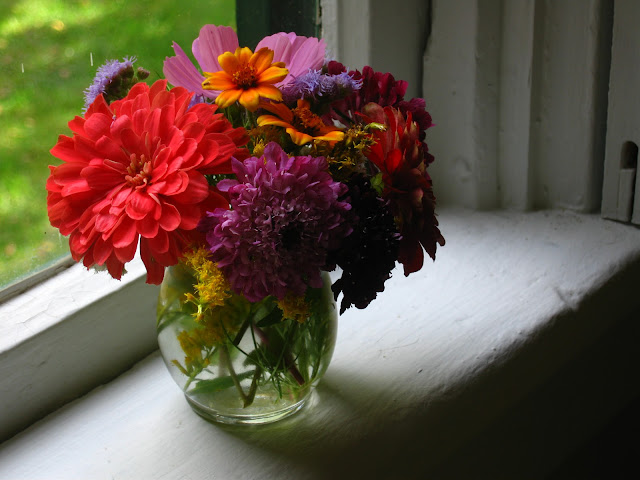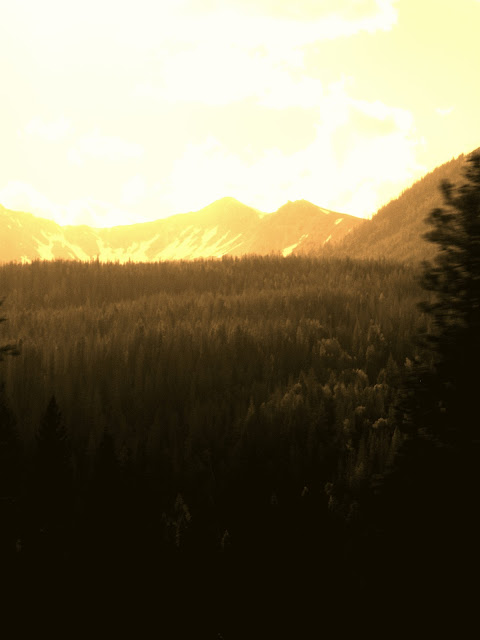While a passenger in a car driving along a road in the rocky mountains, I took this photo. It was shot using my good old Cannon Powershot Digital Elf. Have had that camera for years. It has two layers of scotch take holding the body together. Anyway, this was a long exposure out of a car window.
We can see a number of different elements here. The car lights moving across the picture, what looks like the ground on the bottom left, some kind of reflection at the top (is that my face face reflected in the glass, or maybe the camera itself?), then in the top right we have some kind of light that looks like musical scores to me. There
is some sort of musicality to this picture. A rhythm or cadence to the patterns and shapes. That wispy gold thread in the bottom right has a lovely voice doesn't it? It's almost a finale. And isn't there a kind of narration to the whole piece? A certain flowing logic. A beginning, a middle, and a wispy, gold ending? What music do you see?
Here is the photo as my camera interpreted it.
You can see I heavily edited this. Some of the colors have been changed completely to get the affect I wanted. When I edit a photo intuition, experience, and trial and error all come into play to get it looking the way I want. And often what I want is not defined until I actually get there.
The piece at the top is a version I made for printing. I made it quite bright to compensate for the darkening affect that printing has on a digital picture. When you go from the pixel to ink medium you loose a lot of the brightness in an image.
Below is the piece as I edited it for pixel viewing. Much better huh? Easier to look at. If you ever print your digital photos keep in mind that you don't have pixels projecting your image as rays of light. The print medium works in a completely different way. The physics involve a different process, where light is bouncing off of the pigments on the paper and entering your eye. I don't know the exact reason, but it is simply going to be darker when printed. Find out how to compensate for this by reading the paragraph below the image.

Here is what you do to find out just how much you need to brighten your photo to get it ready for printing. Start by printing a version of the piece as it is. It will be quite darker than what you see on your computer monitor. While looking at both the digital version and the dark print of the picture lower your computer monitors brightness to mach the printed version. This will calibrate your monitor to a printing level. Now bring the brightness of the photo up, in your editor, and it should print at the same level that you are seeing on your monitor.
Try this out now. Bring the brightness of your computer monitor down and scroll back up to the image at the top of this post. What you will see is pretty close to what the image looks like when printed. Even some of that crisp, rich information gets lost when converting to a print image, as it does when bringing down the brightness of the monitor.
Perhaps there is actually a science to doing this. This method is just what has worked out in my experience. I would think that a program like Photoshop would come with this compensation built into it?? Printing photos for display is still relatively new to me. Onward and upward.

















































